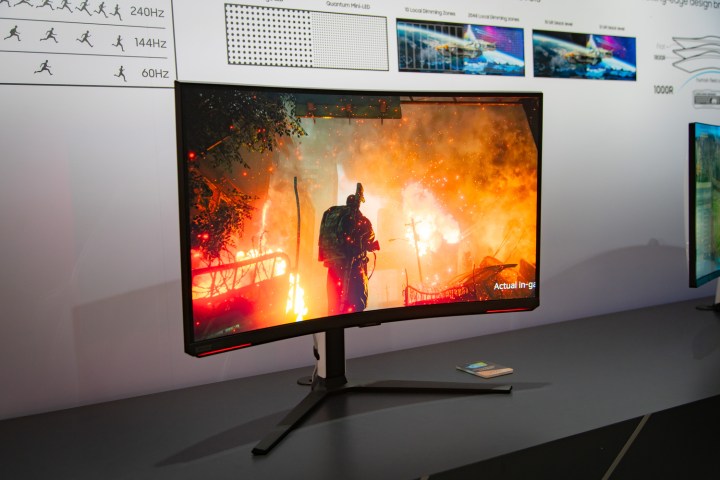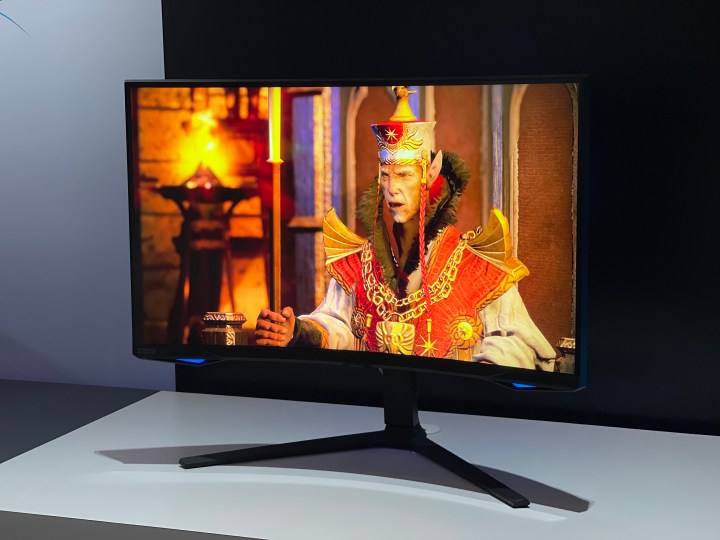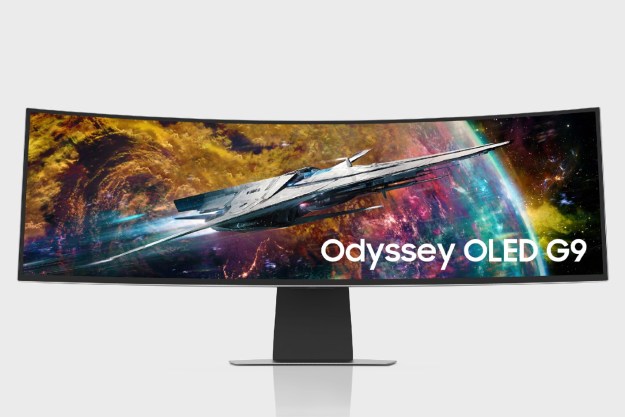Multiple companies came out with high refresh rate 4K monitors during CES 2022. Acer, for example, debuted the world’s first 4K monitor with a 165Hz refresh rate. But then Samsung showed up, and the company clearly wasn’t content to end CES 2022 quietly.
Amid announcements of “world’s first” 4K gaming tech, Samsung blew away everything with a
The world’s fastest 4K monitor

The Odyssey Neo G8 is the world’s first
I hear you, though: You can’t even use a 240Hz refresh rate at
If
It’s future-proof, too. You can’t really future-proof a gaming PC, but you can a monitor. Display tech doesn’t change nearly as fast, and Samsung is on the cutting edge. Even a few years down the line, I can’t imagine there will be many displays that will top the Odyssey Neo G8.
Eye-watering brightness

The Odyssey Neo G8 tops out at a peak brightness of 2,000 nits in HDR mode.
The Neo G8 shares other similarities with its super-ultrawide sibling. It uses a QLED panel and has a static contrast ratio of 1,000,000:1. Even under the blistering show lights at CES, the colors were vibrant and the contrast was deep. This is easily one of the best-looking gaming
It’s like Samsung took the Odyssey Neo G9 and trimmed the sides off. You’re getting one of the best gaming monitors on the market, just without the extra bulk. Even at 144Hz, the Odyssey Neo G8 would be a killer.
I couldn’t fully test noise and heat, but I stuck my hand around the back to see what the monitor was putting out. And I’m happy to report that there wasn’t any heat. High-end, cutting edge
A new benchmark

No matter how expensive the Odyssey Neo G8 will be — and make no mistake, it will be very expensive — it’s a new benchmark for gaming
It’s still a forward-looking display, though. There are some games that can reach
But, when that time comes, the Odyssey Neo G8 will still be able to hold its own.
Editors' Recommendations
- LG’s new OLED monitor does 4K — and so much more
- Should you wait for the 2023 Samsung Odyssey Neo G9, or buy last year’s model?
- Samsung’s first QD-OLED gaming monitor might be dead on arrival
- Samsung Odyssey OLED 49 vs. Odyssey Neo G9 (2023)
- Samsung’s new Odyssey Neo G9 gaming monitor is beautiful, but it has a fatal flaw




